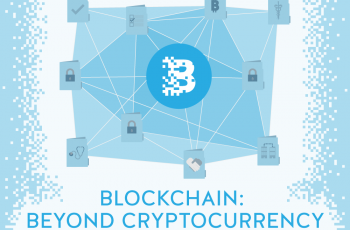The Rise of Decentralized Finance (DeFi): Why Banks Need To Pay Attention
Today, the rise of decentralized finance (DeFi) has shown that the technology is no longer a blockchain-based fintech sandbox.
It has transformed into a complex array of platforms where investors, lenders, and borrowers can carry out bank-like transactions. We have witnessed immense growth of the DeFi industry over the past year.
According to CoinGecko, the total market capitalization of decentralized finance is a whopping $128 billion. This clearly shows the DeFi market is a huge chunk of the crypto market space. One kind of finance that virtually everyone understands is lending. According to the blockchain company (ConsenSys), first-quarter reports on DeFi on Ethereum showed a growing market for loans.
People want easy access to financial products like loans, and DeFi is poised to be the answer. We have several DeFi projects like Uniswap, Compound, PancakeSwap, etc., all offering easy access to loans for borrowers. With the rise of decentralized finance, traditional financial institutions like banks need to evolve or risk being left behind.
Also read: Binance Smart Chain: Its Edge over Ethereum
This article shall explore the DeFi market, different types of DeFi projects, and how DeFi can disrupt the traditional banking system. However, let us have a clear understanding of what decentralized finance is all about before we go further.
What is Decentralized Finance (DeFi)
In simple terms, decentralized finance is an integration of financial applications built on blockchain networks. It is an open-source, permissionless, and transparent financial service ecosystem. DeFi is available to everyone and has no central authority, unlike the traditional banking system. As a DeFi user, you will have full control of your assets, and you can also interact with the ecosystem.
Users interact with the ecosystem by leveraging peer-2-peer, decentralized applications known as dApps. The major benefit of DeFi to users is its easy access to financial services. Most people who are isolated from the current traditional financial system have unhindered access using decentralized finance. Since DeFi applications are built on blockchain networks, they can create an entirely new financial market.
The Rise of Decentralized Finance (DeFi)
In 2020, the decentralized finance market took the crypto market by storm. Today, we still see its continuous growth and popularity; and the value of DeFi keeps skyrocketing. In 2019, the total value locked (TVL) in DeFi was a paltry $40 million. Fast forward to April 2021, the total value locked has hit $50 billion. The difference surely speaks for itself.

The DeFi market got started likely in 2013 with the first Initial Coin Offering known as Mastercoin (currently Omni). The DeFi market has followed an upward trend since 2013, breaking barriers and hitting new milestones. The current DeFi market leader, according to “total value locked,” is MakerDAO, with more than $6 billion locked.
Why Banks Need To Pay Attention
The traditional banking system needs to consider the threat of the rise of decentralized finance. If these banking institutions hope to stay relevant into the future, they need to innovate with DeFi in mind. Although the $60 billion locked in DeFi is miles behind the trillions in centralized finance, the exponential growth of DeFi is a threat to centralized finance.
The excitement and rapid growth of decentralized finance, coupled with its huge investment returns and low interest rates, are beginning to pull huge capital away from centralized finance. Interestingly, the hugely unregulated DeFi market makes it easier for innovators to play in the space. The DeFi space is also very attractive to people who believe traditional banks need to be less stodgy.
Another edge that DeFi has over traditional financial systems is its easy access to individuals to access financial services. Due to its open-source, decentralized approach, the ecosystem is available to virtually everyone and anyone. As the DeFi market continues to grow, new protocols and yield farming tokens are pushing it to the mainstream. Although banks may not be afraid of the rise of decentralized finance, they certainly need to pay attention.
Some Notable DeFi Projects
-
Compound (COMP)
It is an open-source DeFi project that is built on the Ethereum blockchain. Compound Finance is designed to serve as an effective and algorithmic money market where users borrow tokens or earn interest on their tokens. According to the creators, Compound Finance is an open money marketplace where permission is not required. You can easily deposit cryptos or borrow assets against them. To earn interest, you can either use Metamask or any other Web 3.0 wallet. If you have internet access and a crypto wallet, you can interact freely with the Compound Finance ecosystem.
-
UniSwap (UNI)
Uniswap DeFi protocol that allows the exchange of ERC-20 tokens in a permissionless marketplace. Users engage in crypto trading without the need for third parties or centralized intermediaries. Unlike centralized exchanges, Uniswap does not need an order book before executing trades. With its automated liquidity protocol, it eliminates the need for an order book. Users have full control of their assets at all times.
-
Synthetix
It is a decentralized finance protocol that enables the issuance of artificial assets (synths). The aim is to widen the crypto space by offering an on-chain exposure to different crypto and non-crypto assets. With the Syhthetix protocol, users can create assets that mimic real-world assets like gold, real estate, etc. The Synthetix Network Token (SNX) serves as the major form of collateral backing synthetic assets available on the Synthetix platform.
Also Read: Non-Fungible Tokens: What are They and How do they work?
-
AAVE
It is DeFi protocol that allows lending, borrowing, and earning of interest on your assets. Built on the Ethereum blockchain, AAVE is an open-source and transparent system. All assets deposited on the AAVE platform are converted into special tokens called aTokens. These aTokens are ERC-20 standard tokens with a value pegged 1:1 to deposited collateral on the AAVE platform. Additionally, all interests on aTokens like AUSDC, aWETH, aBUSD, etc., are stored, exchanged, or transferred to any ETH wallet. All interests accrued on aTokens are real-time while the collateral is lent out to borrowers.
There are several other DeFi projects like Pancakeswap, Chainlink, Yearn.Finance, and so on.
Conclusion
The rise of decentralized finance is certainly a wake-up call to the traditional banking systems to embrace innovation. It is not just any kind of innovation; rather, it would easily access financial services. If the traditional financial system hopes to stay relevant, then it has to rise to the occasion. Without good innovation by banks, it is only a matter of time before DeFi becomes mainstream and the banks take the back seat.

